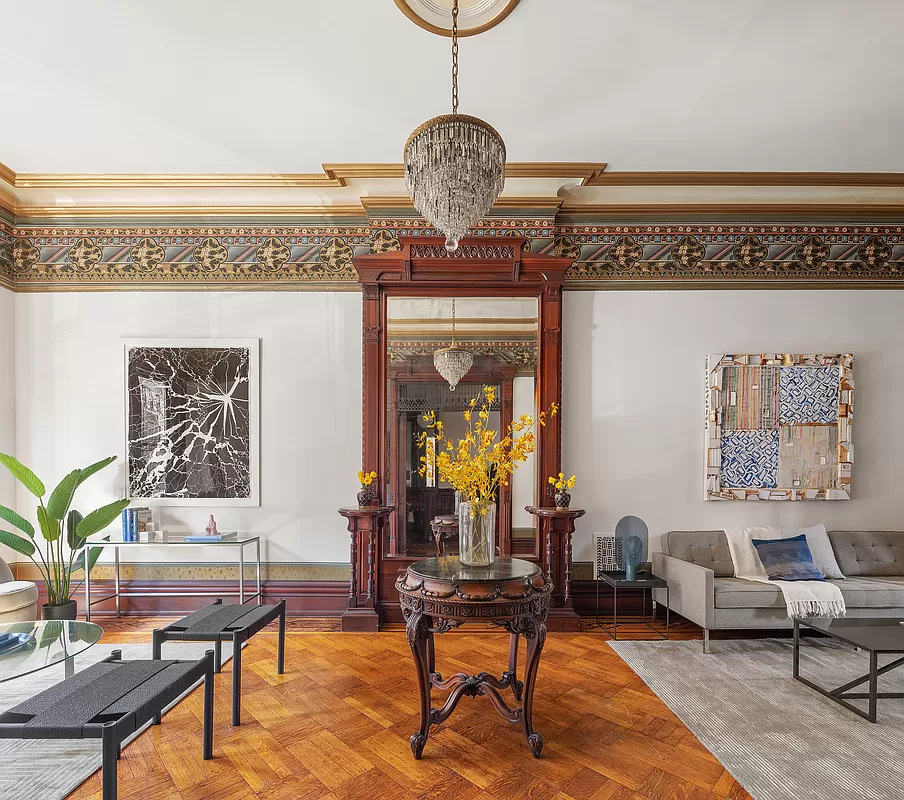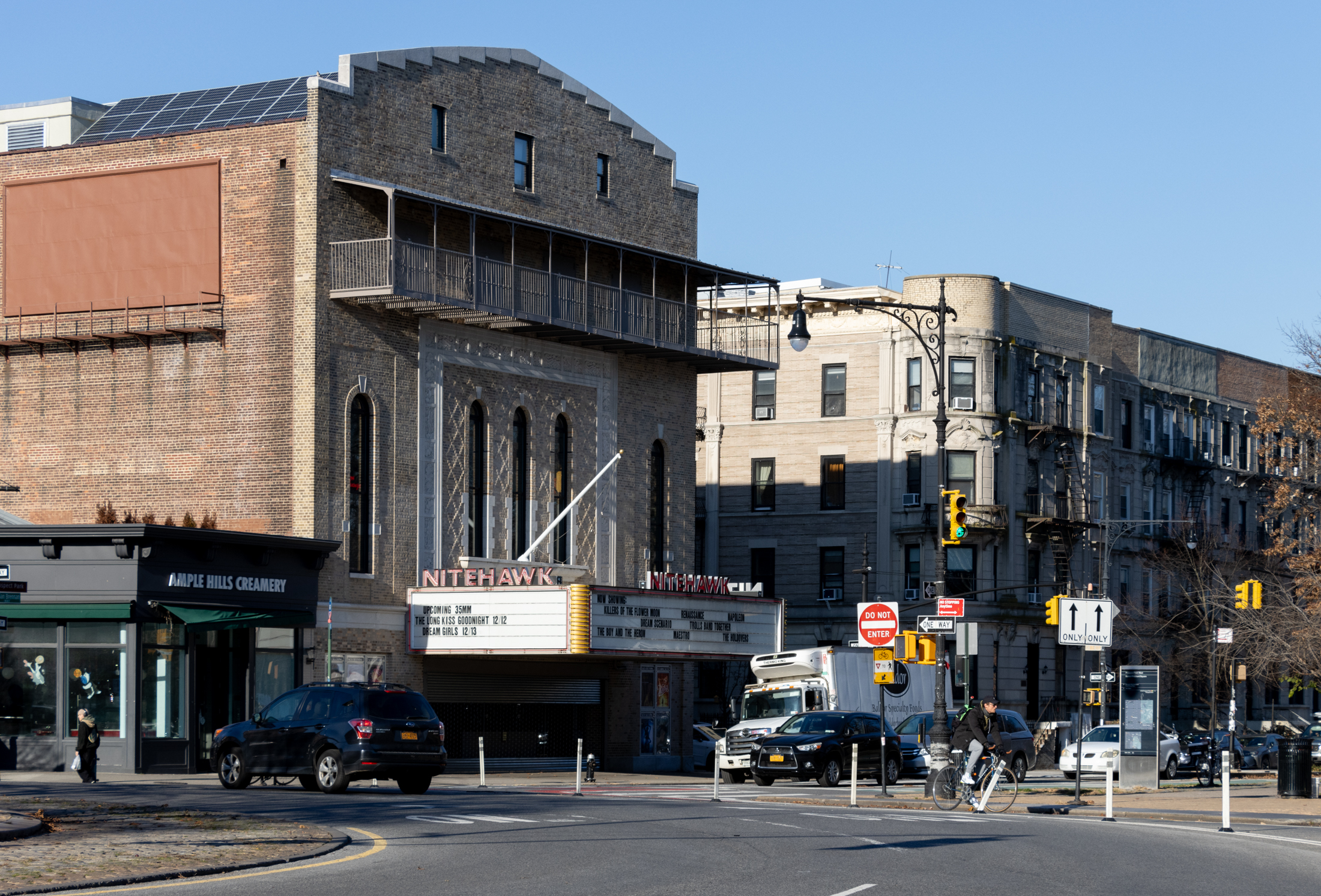Building of the Day: 672-694 President Street
Brooklyn, one building at a time. Name: Row houses Address: 672-694 President Street Cross Streets: 5th and 6th avenues Neighborhood: Park Slope Year Built: 1886-87 Architectural Style: Queen Anne Architect: J.W. Bailey Landmarked: No, but part of a proposed extended Park Slope HD The story: Park Slope’s named blocks have wonderful homes on them, but…

Brooklyn, one building at a time.
Name: Row houses
Address: 672-694 President Street
Cross Streets: 5th and 6th avenues
Neighborhood: Park Slope
Year Built: 1886-87
Architectural Style: Queen Anne
Architect: J.W. Bailey
Landmarked: No, but part of a proposed extended Park Slope HD
The story: Park Slope’s named blocks have wonderful homes on them, but most people seem to pay attention to those only between 7th Avenue and the park. To do that is to really miss out on some treasures on the blocks between 7th and 4th avenues. Virtually all of the houses on these blocks were built in the building boom years between 1875 and 1895, with only a few hiccups every once in a while for recessions and short financial crises. During that time, developers snapped up the land and hired architects and builders; some well-known, others long forgotten, to build speculative housing for the people eager to buy and move into this fashionable neighborhood.
Some developers were able to buy entire sides of blocks, while others could only get two or three plots. The result is a delightful mishmash of architectural styles and quality of design. While the better known and better paid architects certainly delivered great designs, sometimes a total unknown came up with a masterful group of houses, and then disappeared from view. This group is a fine example of that.
James C. Jewett was the developer of the row of twelve houses on north side of President Street, numbers 672-694, between 5th and 6th avenues. He hired J. W. Bailey to be the architect. I couldn’t find any other examples of Bailey’s work, or find out anything else about him. Mr. Bailey may not have been flashy, but he delivered a nice group of houses, which add tremendously to the Park Slope streetscape.
The twelve houses are all 17.5 feet wide and 45 feet long. A couple have extensions, probably added by their owners later. Bailey designed them with protruding square bays which give the group a great sense of movement as your eye travels down the row. Adding to that, is a great sense of the whole, as the roof ornamentation and mansard roofs add to the unity of the row. Some of the houses are now missing their pediments, but the unity of the group is made up in the other elements.
As an unusual note, all of the houses seem to have had new modern glass entrances installed at the same time. I wonder how that happened. At any rate, although the Queen Anne exuberance of some local row houses built at the same time makes these look very tame, they still have a nice gravitas, and show a fine sense of balance and proportion. These are nice speculative housing for the late 19th century.
In 1900, nine of the houses were resold in one lot, as seen in the Brooklyn Eagle announcement. At the time, several of the houses were already being advertised as having furnished rooms for let, and at least one, 672, was mentioned in the paper as a “fashionable boarding house.” The residents here were all respectable middle class people, and over the years, they married and died, mentioned in the papers only during those great milestones.
There were some exceptions, as the row made the news, usually for all the wrong reasons. In 1896, a 21 year old servant named Bridget Fitzgerald died in 694, the victim of gas asphyxiation. A gas leak was the cause; ironically her death prevented a larger tragedy from a gas explosion that could have leveled the house and perhaps caused a fire that destroyed even more. Several children playing on this block over the years were hit by cars or horse drawn wagons, the saddest being the death of four year old Philip Leonard who lived at 692 in 1907.
Crime knows no neighborhood, really, and things happened here, too, over the years. Frank Kelleher, who lived at 694, was stabbed on nearby 7th Avenue, in a robbery. In 1905, a group of five local boys, all under 16 years of age, were caught after breaking into 680. The house was empty at the time, and the boys broke in through a downstairs window and stole all of the light fixtures in the house. They were caught trying to sell them to a junk dealer.
In 1918, a woman named Emma McQuaid died in her home at 684 President, after having an operation that was performed here at home. The papers did not say what that operation was, or who performed it. Several doors down, at 690, a soldier never came home, while fighting in World War I. Gertrude Walsh was hit over the head with a glass toy pistol by her husband in 1915. He said she had left him, and was a bigamist. The magistrate didn’t care, he sent the husband to jail for assault.
A judge also was angry in the case of Oscar Carlson, who lived at 692 in 1923. He was arrested for public intoxication and came to court bandaged and limping. He said the police had beaten him up, but he didn’t want to press charges because he probably deserved it. The judge disagreed. “We’ve been having too much of that going on,” he said, and called for an investigation into police brutality.
And finally, 674 was home to Frank Lee Fornell, a lover of books and and writing. He was president of the Brooklyn Writer’s Club, which often met here at his home at 674 President Street, in 1896. Ordinary people, ordinary occurrences, both good and bad, tragic and every day. Most of us live in a President Street like this, in one way or another. GMAP
(Photo: Kate Leonova for PropertyShark)













I have fond memories of 682. Friend lived there late ’80s (purchased I think in 1965 for $110k),
4 apts.
type — 1985
I am really in love with the skyline of this row. Very elegant design.